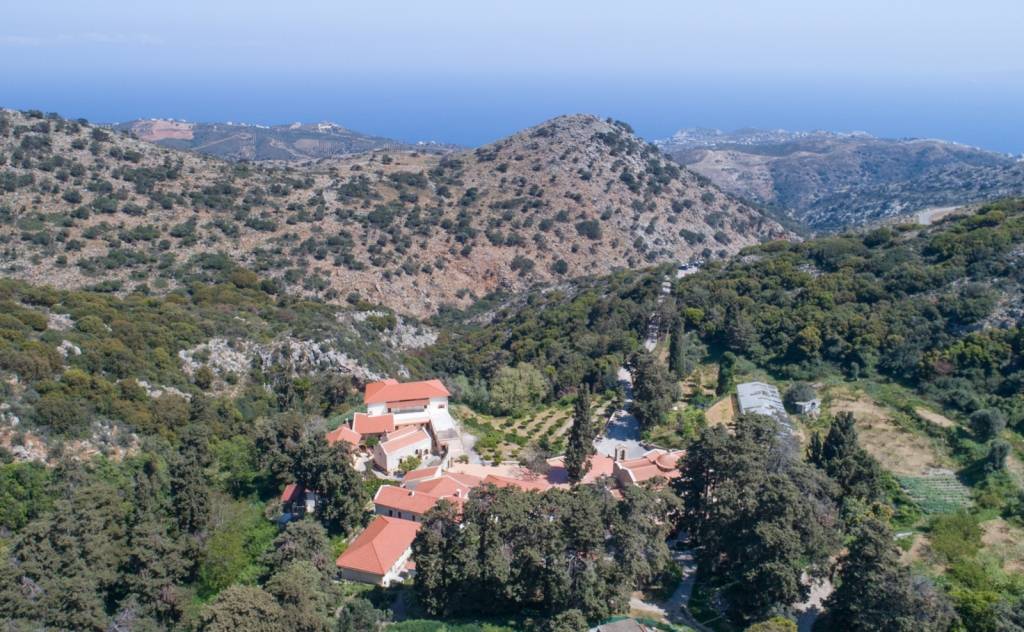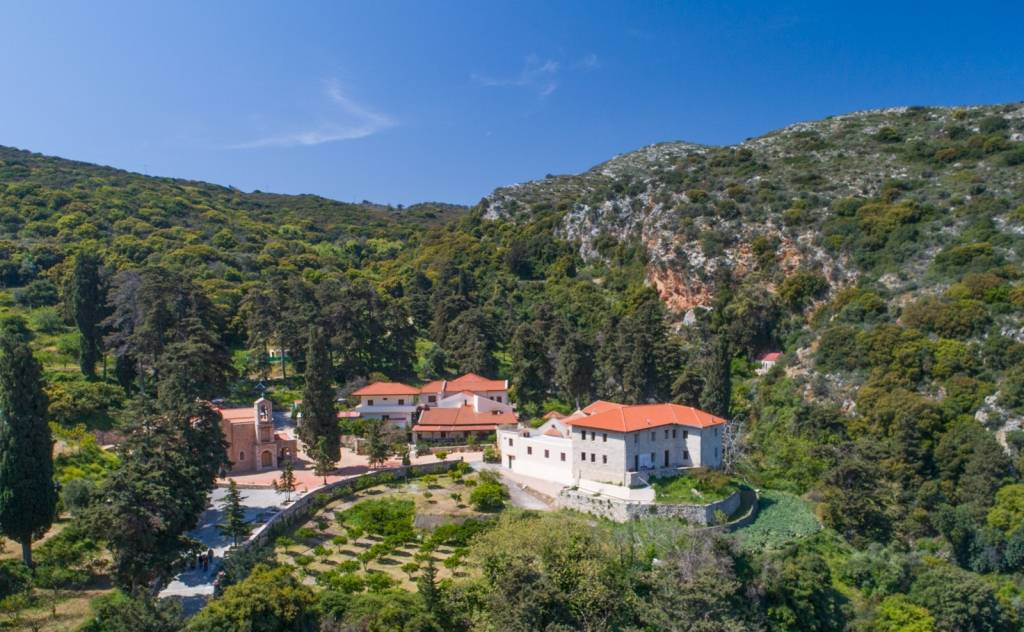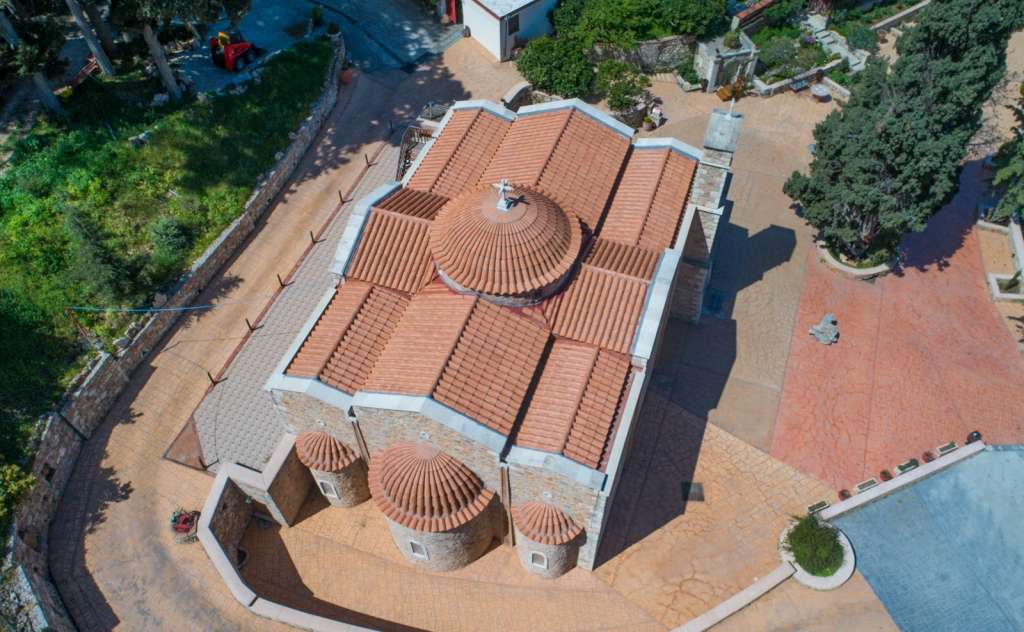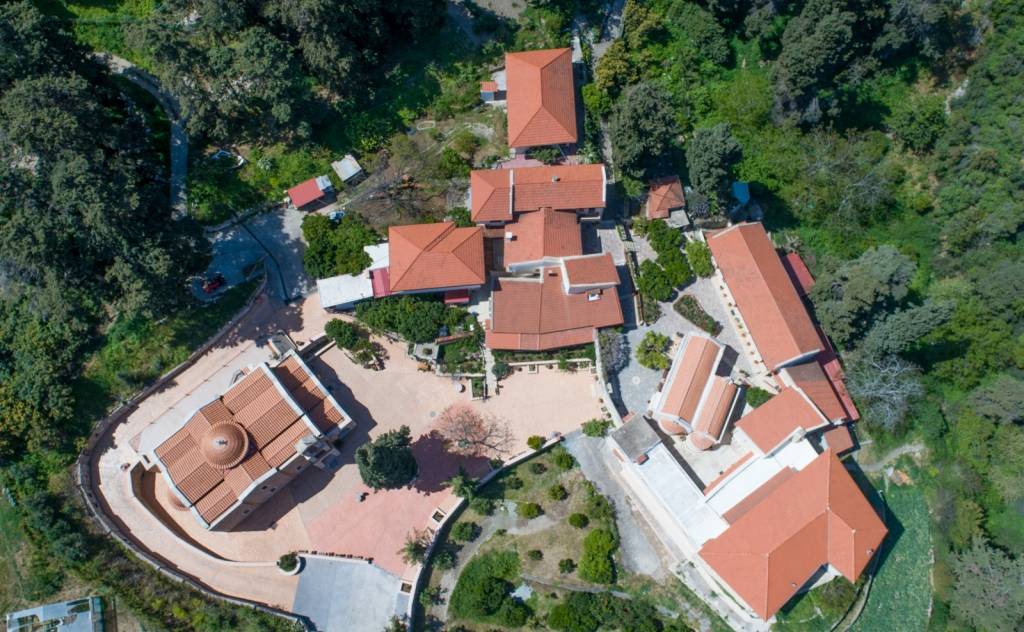Savvathiana Monastery
Savvathiana Monastery is located 14 km northwest of Gazi, in a mountainous area at a higher level than the village of Rodia. Well hidden in a green landscape, it is built at an altitude of 440 metres and is 20 kilometres from Heraklion. The Monastery is located in a naturally fortified position, and its history dates back to the Venetian Occupation. It is one of the most beautiful monasteries in all of Crete.
According to speculation, the Monastery was founded by monks from the coastal monasteries of the surrounding areas to protect themselves from repeated pirate raids. During the Venetian period, it was one of the strongest monasteries in the area. After conquering the island by the Turks (in the second half of the 17th century), the Monastery was destroyed and deserted. In fact, the monks who fought against the invaders were arrested and enslaved. After the Ecumenical Patriarchate's efforts, they managed to be set free and return to the Monastery, which they restored. It is the only Monastery in the area of Almyros and Rodia in the prefecture of Heraklion that survived the Great Cretan War (1645-1669).
In the archives of Venice, there are many documents which refer to the Monastery of Savvathiana. Specifically, a document of 1549 speaks of the "Monastery of Agios Antonios" (of Mr Savvathios). Also, the Monastery is mentioned by Cornelius, along with other monasteries in Crete, under the name Monasterium S. Sabbe Abbatis de Savatiani. During the German Occupation, the Monastery offered shelter to many hungry and persecuted people from Heraklion and the surrounding villages. As a result of the German Occupation, the Monastery was deserted once again.
In the Monastery of Savvathiana, there are three temples: the oldest, central, two-aisled tile-roofed church without a dome, dedicated to the Genesis of the Virgin and the Forty Martyrs, where on the lintel of its door there is an inscription decorated with thorn leaves and bears the date 1635, the central church of Agios Antonios (based on the old Cretan architecture of Christian churches) and the two-aisled cave church dedicated to Agios Antonios and Agios Savvas. The aisle of Agios Savvas was built in 1954, as mentioned on a wall slab.
When visitors enter the area of the Monastery, they pass through a green area with tall cypress trees and orchards and end at the newest church of the Monastery. Passing through the small walls and the large entrance (which, in the past, protected the Monastery), the visitor sees the older church and the building facilities where the nuns' cells and the craft workshops are located. Of particular natural beauty are the gardens that the nuns lovingly maintain. Crossing a cobblestone path with a small stream and an old stone bridge (which bears the inscription 1535), the visitor reaches the ossuary, the cave church of Agios Antonios, and the Monastery cemetery. In the area of the Monastery, there is also an old watermill, the dining room of the foreigners, the old mansion (which was built in 1904), and the old aqueduct with a construction date in 1799 and renovation date in 1843. In the area, there are also the tombs of two great warriors against the Turks, Eumenios Vourexakis and Iraklis Kokkinidis.






